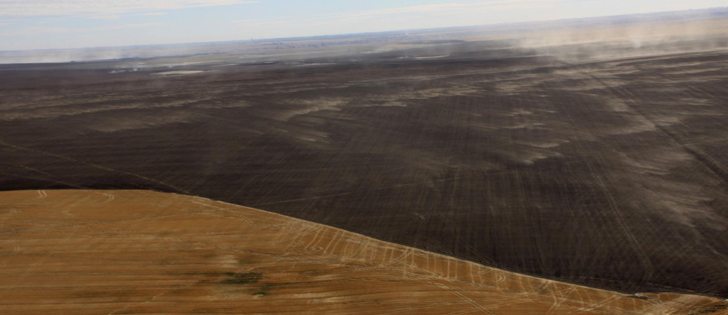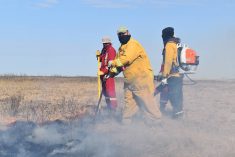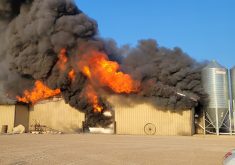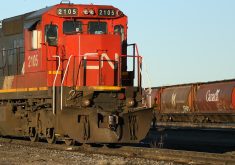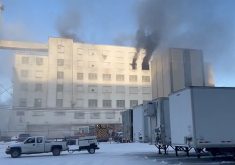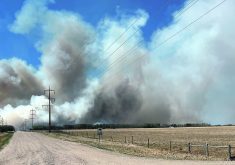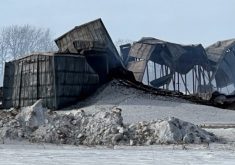The wind was gusting to 110 km/h Sept. 10 in southern Alberta when Kevin Serfas got a phone call from one of his custom combining crews.
The crew chief had shut down operations at 12:30 that day over fears the machines might start a fire that couldn’t be stopped.
Serfas, who farms 40,000 acres on land between Lomond and Standoff, agreed with the plan.
A few minutes later, he got another call. A grass fire was indeed burning, started by a downed power line on the Blood Indian reserve. And it was headed toward his fields, other farmland and residences on the reserve and in the County of Lethbridge.
Read Also

No special crop fireworks expected
farmers should not expect fireworks in the special crops market due to ample supplies.
By the time the wildfire was controlled more than 24 hours later, it had burned an estimated 12,530 acres of land, threatened the town of Coalhurst and forced evacuation of about 2,000 residents in that town and more in subdivisions near Lethbridge.
No lives or homes were lost but there was damage to various outbuildings and extensive loss of fences.
Numerous power poles were burned and toppled, cutting power to about 175 homes and businesses.
Serfas lost about 250 acres of barley and 300 acres of stubble. He believes his was the only crop lost because harvest is nearing its end in the region.
However, vast stretches of stubble and prairie grass now lie blackened on fairly light soil, increasing the threat of erosion.
County of Lethbridge manager Dennis Shigematsu said damage assessments are underway but considering the size of the blaze and its speed of an estimated 140 metres per minute, it could have been worse.
“If it had crossed the highway (Highway 3), Coalhurst could have easily been taken out,” he said. “It was very horrifying. Scary. But my staff and all the other agencies, the volunteer fire departments, just did a super job.”
The fire burned outbuildings at the federal government’s Animal Disease Research Institute, which was directly in the fire’s path but protected by an irrigation system and fire fighting efforts.
“In terms of damages to fences and outbuildings, we haven’t got an estimate on that yet, but there were no animals hurt, there were no people hurt and we were back in business yesterday morning (Sept. 12),” said ADRI director Pamela Gale.
“It smells like a campfire down here and it’s likely to smell like that way for awhile. We’re probably looking at a dusty winter when everything starts blowing over from the west side.”
Fire crews from the Blood Reserve, City of Lethbridge, Picture Butte, Coalhurst, Coaldale and other towns responded to fight the fire, as did farmers and other area residents.
Water bombers were called in Monday afternoon and evening to drop water and fire retardant on the aggressive blaze that had already leaped two highways and the Oldman River.
Serfas and other farmers spent hours guiding farm and road equipment through thick smoke as they built fire breaks to stop the spread.
“It was pretty wild,” said Serfas.
“There was so many tractors and graders trying to throw down fire guards and the smoke was so thick that nobody could see anybody.
“It was mass chaos, but it was a very concerted effort by a lot of people. The Blood tribe fire department and the Blood tribe police and the volunteers, they did a fantastic job out there. It was a freak of nature accident. The wind blew down a power pole. It could have happened anywhere.”
Fire bans are in place in the city and county, as well as in several surrounding municipalities and southern provincial parks.
A few days after the fire, Serfas said the end of harvest, which began for him on July 30, couldn’t come soon enough. He was still smarting from his decision to give harvest crews the day off Sept. 9.
“I said, ‘shut it down. It will still be here on Monday.’ Sure enough, on Monday afternoon it burned up the stuff that I told everybody to leave on Sunday. It was a little disheartening in that sense.”


